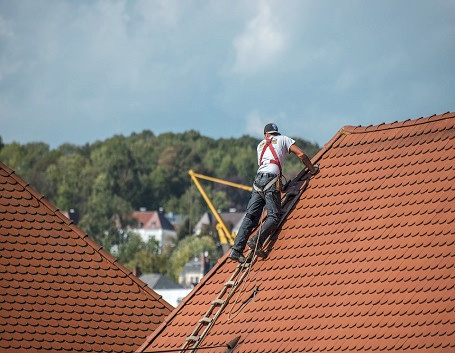What Are the Different Types of Roofing Insulation?
With roofs, it is important to insulate them so that you are receiving the double benefit of not letting cold air in or warm air out. The material and shape of the roof will ensure that a property’s occupants and contents are protected from inclement weather but it is the insulation that stops valuable heat from escaping. Heat can be considered valuable because of how much it costs to heat a home or business and how much it costs the environment when non-renewable energy sources are used. Gas, coal, and oil, will one day run out. Faster still, if we do not control our heating through a good roof and effective insulation.
So, this article will look at the different types of roofing insulation that are used by companies such as Apple Roofing when they repair or install new roofs on residential houses or commercial buildings.
Glass Rock/Mineral Wool Insulation
As one of the most common types of roof insulation, glass rock/mineral wool fits between ceiling joists. It is environmentally friendly in that glass wool is made from recycled glass bottles. It is a material that is easy to handle and a cost-effective solution to roof insulation.
It is an interesting process that produces this type of material. The glass or rock is melted down at temperatures greater than 1000 degrees centigrade and then spun into wool strands for use. A binding agent will have been used to hold these strands together. So, this is something to think about next time you see a roof installer using it.
Spray Foam
Polyurethane spray foam can be applied under roof tiles or slates to bond them to one another. The effect of this is a reduction in energy bills by up to 20 percent. This will also reduce your carbon footprint.
Blanket Insulation
Also known as matting insulation, blanket insulation is used on a range of buildings from residential houses and flats to commercial shops and offices. Also, public sector buildings such as hospitals and schools.
Blanket insulation comes in rolls of varying thicknesses and widths and is backed with a foil-type felt, rock, glass, or mineral material. It is ideal where access to a loft is easy. The first layer will be laid between joists, and so along the horizontal beams, and then another layer will be laid at right angles to cover the joists. A dept of 270mm is generally required. This should be done by someone competent to ensure maximum insulation is obtained.
Rigid Insulation Boards
These insulation boards can be cut to perfectly fit a loft space. They should be fitted by a professional to ensure that they are cut to the correct size and so will fit snugly between your rafters. The boards can then be covered by insulated plasterboard for a more attractive finish.
Loose-Fill Insulation
This type of insulation can be blown into the gaps by a professional. Specialist equipment will be used to blow the fire-retardant material into the spaces. Materials such as cellulose, cork granules, or mineral rock wool, will be used. This type of solution works well when roof spaces are relatively inaccessible. It is about filling the spaces in so that the heat you have paid for cannot escape through your roof. So, providing your roof is not too draughty, the loose-fill material will stay in place well and so prove to be an excellent insulator.
Structural Insulated Panels
Structural insulated panels are panels that have been prefabricated for roof spaces. They provide good insulation compared to traditional methods. They will usually consist of panels that are 10cm-20cm thick. They will be made in a factory and then shipped to the site where they are used, whether that be a building site, office space, or home. The panels can be made in a variety of sizes to suit. Structural insulated panels are used a lot with new builds.
So, a range of materials that you can check out with your chosen installation company. All of them provide insulation that will save you money with your heating bills and be environmentally friendly. It is everyone’s responsibility now to protect the planet, and so why not save money on fuel bills while doing it. That would be the message.
